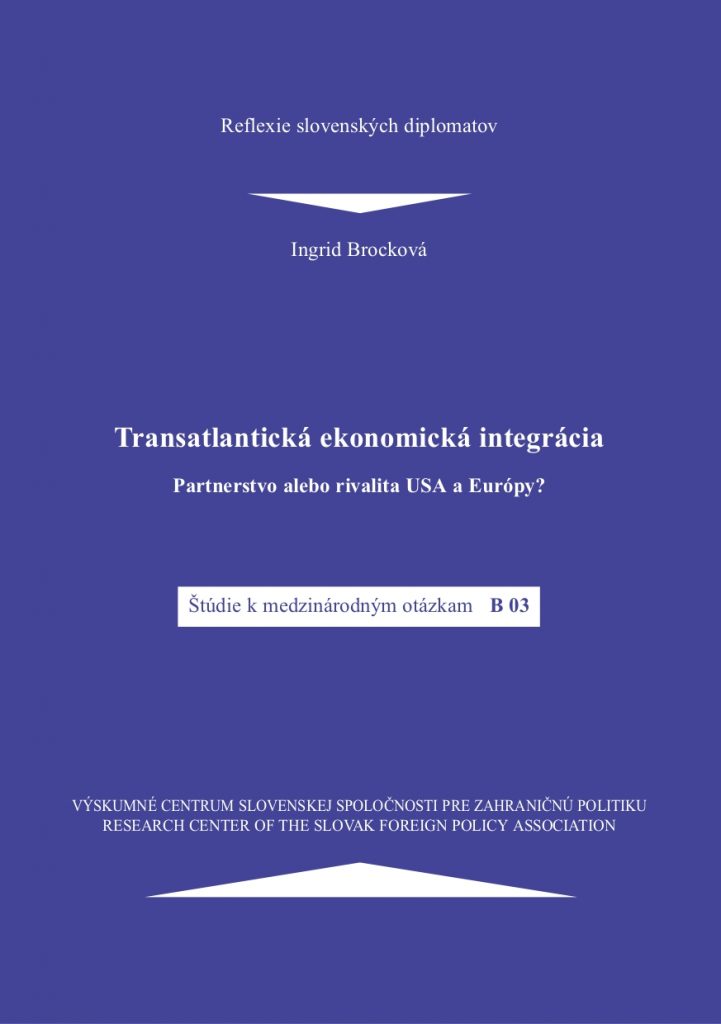Transatlantic economic integration. Partnership or rivalry between the US and Europe?

The aim of this thesis was to outline the challenges of the transatlantic relationship, the US-EU relationship: their position in the world economy; to describe their partnership as represented by the so-called New Transatlantic Agenda and to pay attention to their existing problems. Today, the entire Central and Eastern European (CEE) region, including the Slovak Republic, is unquestionably moving towards the transatlantic space with its accession process to the EU. For this reason, I devoted the third chapter to the U.S. administration’s view of the EU enlargement process and the U.S. perception of the CEE region, whether through CEFTA, the so-called Luxembourg or Helsinki Group of candidate countries, the new NATO member states, or in the form of the Visegrad Four grouping.
Bilateral relations between the US and Slovakia have intensified especially after the last parliamentary elections in the Slovak Republic after November 1998. Their economic dimension is analysed in Chapter 4, which results in a starting point and some recommendations for Slovak economic foreign policy in the near future.
Author: Ingrid Brocková
The publication is available only in Slovak language.

